To manually close a garage door, follow these simple steps:
1. Locate the emergency release cord: It is usually a red cord with a handle hanging from the garage door opener rail or track near the center of the garage door.
2. Pull down on the emergency release cord: This will disconnect the door from the automatic opener and allow you to operate it manually.
3. Lift the garage door: Stand inside the garage and lift the door manually by grabbing it from the bottom and lifting upward. Use your legs instead of your back to avoid straining yourself.
4. Close the garage door: Lift the door until it is fully closed, ensuring that it is secure and properly aligned.
5. Reconnect the garage door to the automatic opener: Once the door is fully closed, pull the emergency release cord handle straight down until it clicks back into place, reconnecting the door to the opener.
6. Test the automatic opener: After reconnecting the door, test the automatic opener by pressing the open/close button. The garage door should operate normally.
It is important to note that manually closing the garage door should only be done in emergency situations or when necessary. It is always recommended to use the automatic opener for regular use, as manually operating the door can be physically demanding. 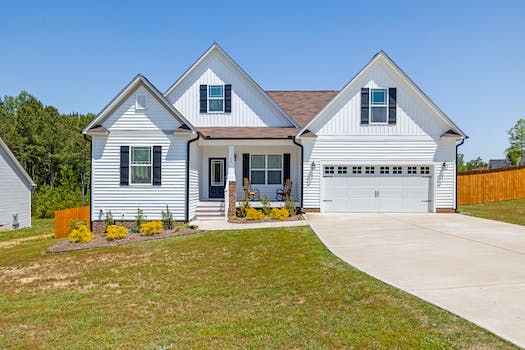
Step-by-step guide for manually closing a garage door
If you ever encounter a situation where your garage door fails to close automatically, knowing how to manually close it can save you time and frustration. In this guide, we will walk you through the steps to manually close your garage door.
Tools needed:
- A ladder
- A sturdy object, such as a 2×4 piece of wood or a cinder block
- A flashlight
Step 1: Disconnect the garage door opener
Before attempting to manually close the garage door, you need to disconnect it from the garage door opener. Locate the emergency release cord hanging from the opener carriage. Pull the cord to release the door from the opener mechanism.
Step 2: Position the ladder
Place the ladder securely under the garage door so that you can reach the manual release handle. Make sure the ladder is stable and positioned on a flat surface.
Step 3: Find the manual release handle
Locate the manual release handle, which is usually red and located near the top of the garage door. It may be marked with a “Manual Release” or similar label. If you can’t find it, refer to your garage door opener’s manual for specific instructions.
Step 4: Pull the manual release handle
Gently pull the manual release handle downwards. This action disengages the garage door from the tracks, allowing you to manually operate it.
Step 5: Close the garage door
Now that the garage door is disconnected from the opener, carefully push it downwards. Be cautious of its weight and lower it slowly. Use the sturdy object, such as a 2×4 piece of wood or a cinder block, to hold the door in the closed position.
Step 6: Secure the garage door
Once the garage door is closed, place the sturdy object under it to prevent it from accidentally opening. This extra precaution ensures the safety of yourself and others.
By following these steps, you can manually close your garage door in the event of an automatic failure. Remember to consult your garage door opener’s manual for specific instructions or contact a professional if you encounter any difficulties or issues.
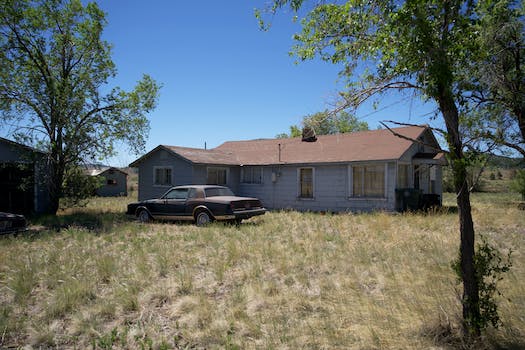
Tools and Techniques for Manually Closing a Garage Door
Garage doors offer convenience and security to homeowners, allowing them to easily access their vehicles and store valuable belongings. However, there may be situations where power outages or mechanical failures prevent the use of automatic garage door openers. In such cases, it’s essential to know how to manually close a garage door. This article will guide you through the necessary tools and techniques to handle this situation effectively.
Tools Required
- A sturdy ladder: Ensure safety by using a ladder that can support your weight.
- Vice grips: These pliers-like tools are essential for releasing the emergency release cord.
- Flashlight: In case the power outage occurs at night, having a flashlight will help in navigating the garage.
- Rope or cord: This will be used to lift and lower the garage door.
- Protective gloves: Safeguard your hands from potential injuries by wearing sturdy gloves.
Techniques for Manual Closure
Now that you have the necessary tools ready, follow these steps to manually close your garage door:
- Position your ladder securely beneath the emergency release cord.
- Locate the emergency release cord, which is usually red or brightly colored. Use the vice grips to grip and pull the cord down.
- Securely attach the rope or cord to the handle of the garage door. Make sure it is tightly fastened to ensure proper lifting and lowering.
- Climb down the ladder and stand clear of the garage door.
- Carefully pull the rope or cord downward to release the door from the automatic opener mechanism.
- Apply steady, controlled force to close the garage door manually. Be cautious of any obstacles or obstructions that may impede the door’s movement.
- Once the door is fully closed, lock it securely for added safety.
By following these tools and techniques, you can effectively manually close your garage door in case of emergencies or malfunctions. Remember to regularly check your garage door’s condition and perform maintenance to prevent unexpected issues. Stay prepared and ensure the smooth operation of your garage door, even in adverse situations.
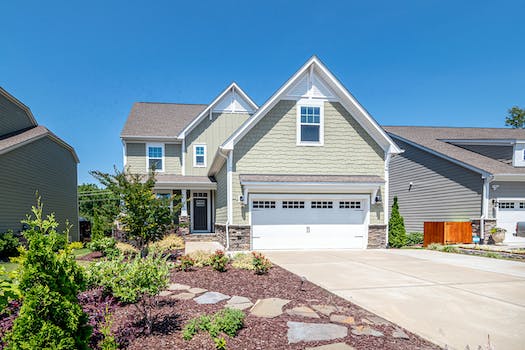
Common issues and troubleshooting for manually closing a garage door
Garage doors are an essential part of our daily lives, providing convenience and security to our homes. However, there might be situations where you need to manually close your garage door. In this article, we will discuss some common issues that may arise while manually closing a garage door and provide troubleshooting solutions to fix them.
One of the most common issues you may encounter is a misaligned garage door. This can happen due to various reasons such as loose or broken cables, damaged tracks, or worn-out rollers. To troubleshoot this problem, start by inspecting the cables and make sure they are properly attached and not damaged. Additionally, check the tracks for any obstructions or damage. If you notice any issues, tighten loose cables or replace damaged parts to realign the door.
Another common issue is a malfunctioning garage door opener. If your opener fails to work or doesn’t respond to your commands, there might be a problem with the remote control or the opener itself. First, check the batteries in your remote control and replace them if necessary. If that doesn’t solve the issue, inspect the opener for any visible signs of damage or loose connections. In case of any damage, consider consulting a professional to repair or replace the opener.
Additionally, manually closing a garage door can be difficult if the springs are worn out or broken. Springs are responsible for counterbalancing the weight of the door, making it easier to open and close. If you notice that your garage door feels heavier than usual or doesn’t stay in place when manually closed, it may be due to worn-out or broken springs. In such cases, it is highly recommended to seek professional help as replacing garage door springs can be dangerous if not done properly.
| Common Issues | Troubleshooting Solutions |
|---|---|
| Misaligned garage door | Inspect and realign cables, tracks, and rollers |
| Malfunctioning opener | Check remote control batteries, inspect opener for damage or loose connections |
| Worn-out or broken springs | Seek professional help for spring replacement |
In conclusion, manually closing a garage door can sometimes present challenges, but knowing the common issues and troubleshooting solutions can help you resolve them effectively. Remember to always prioritize safety and seek professional assistance when needed. By addressing these issues promptly, you can ensure the smooth operation of your garage door and the security of your home.
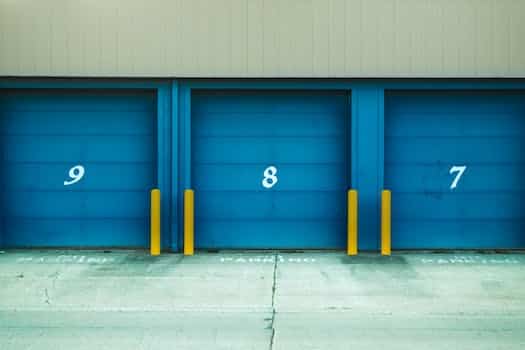
Safety Precautions to Consider When Manually Closing a Garage Door
Closing a garage door manually can be a necessary task in various situations. Whether there’s a power outage or the garage door opener is malfunctioning, it’s crucial to prioritize safety when manually closing the door. By following these safety precautions, you can ensure the process is both efficient and secure.
1. Clear the Area
Before attempting to manually close the garage door, make sure the area is clear of any objects or obstructions. Remove any items that may interfere with the door’s movement, such as bicycles or ladders. This step prevents accidents and potential damage to both the door and surrounding objects.
2. Disconnect the Automatic Opener
If your garage door is usually operated using an automatic opener, disconnect it before closing the door manually. Look for the emergency release cord or lever usually located near the opener motor. When pulled or twisted, it disengages the door from the opener mechanism, allowing you to operate it manually. This step ensures the opener does not accidentally engage while you’re closing the door.
3. Use Proper Lifting Techniques
Manually closing a garage door may require some physical strength, especially if it’s an older or heavier door. Always use proper lifting techniques to minimize the risk of strain or injury. Bend your knees, keep your back straight, and lift the door using your legs and core muscles. Avoid putting excessive strain on your back or relying solely on your arms.
4. Maintain a Firm Grip
As you manually close the garage door, maintain a firm grip on the door handle or any designated areas for gripping. This ensures you have full control throughout the process and reduces the risk of the door slipping or falling unexpectedly. If the door lacks a designated handle, consider using gloves to improve your grip.
5. Stay Alert and Watch for Hazards
While manually closing the door, stay alert and watch for any potential hazards or malfunctions. Look out for loose cables, damaged springs, or misaligned tracks that might pose a safety risk. If you notice anything unusual or suspicious, refrain from forcing the door closed and seek professional assistance.
- Always prioritize safety when manually closing a garage door.
- Clear the area of any obstructions before starting the process.
- Disconnect the automatic opener to prevent accidental engagement.
- Use proper lifting techniques to avoid strain or injury.
- Maintain a firm grip on the door throughout the closing process.
- Stay alert and watch for any hazards or malfunctions.
By taking these safety precautions, you can confidently and securely close your garage door manually. Remember to regularly inspect and maintain your garage door to ensure safe operation in any situation.
For professional assistance with garage door repairs or maintenance, contact reliable and experienced service providers in your area.
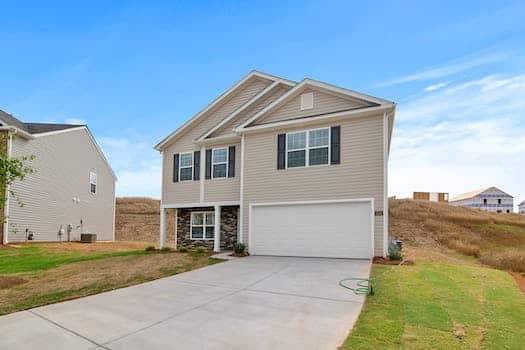
Benefits and Drawbacks of Manually Closing a Garage Door
Garage doors are an essential component of our homes, providing security and protection for our vehicles and other belongings. While most garage doors nowadays come with automatic closing mechanisms, there may be instances where manually closing the garage door becomes necessary. In this article, we will explore the benefits and drawbacks of manually closing a garage door.
The Benefits
1. Cost-saving: One of the significant advantages of manually closing a garage door is the cost-saving aspect. In case of a power outage or a malfunction in the automatic closing mechanism, being able to close the door manually saves you from potential repair costs.
2. Emergency situations: Sometimes, emergencies may arise that require you to quickly secure your garage. Whether it’s a sudden storm or a break-in attempt, manually closing the door allows you to take immediate action, ensuring the safety of your belongings.
3. Control: By manually closing your garage door, you have full control over the process. You can monitor the speed and ensure it is properly aligned, minimizing any potential damage to the door or surrounding structures.
The Drawbacks
1. Physical effort: Manually closing a garage door can be physically demanding, especially if it is heavy or if you have mobility issues. It might require a significant amount of strength and exertion to close the door completely.
2. Time-consuming: Manual closing may take more time compared to using an automatic mechanism. If you are in a hurry, the extra minutes spent on closing the door manually can be a drawback.
3. Inconvenience: While manually closing a garage door can be an option during emergencies, it can also be inconvenient in non-emergency situations. Having to manually open and close the door every time you need to use your garage can be cumbersome and tiresome.
Conclusion
In conclusion, manually closing a garage door has its benefits and drawbacks. It can be a cost-saving solution during power outages or emergencies, giving you control over the process. However, it can also be physically demanding, time-consuming, and inconvenient in day-to-day usage. Consider your specific needs and circumstances to determine whether manually closing a garage door is the right choice for you.
SSS FAQ
1. How do I manually close my garage door?
To manually close your garage door, locate the emergency release cord typically hanging from the operator. Pull down on the cord firmly and lift the door until it reaches the closed position.
2. What should I do if my garage door won’t close automatically?
If your garage door won’t close automatically, check if there are any obstructions blocking the door’s path. Clear any objects and make sure the safety sensors are aligned properly. Additionally, inspect the tracks and rollers for any obstructions or damages.
3. Why is my garage door not closing all the way?
Several factors can cause a garage door to not close all the way. Check if there are any objects obstructing the door’s path, clear them if so. Inspect the tracks and rollers for any damage or misalignment. Adjust the close limit switch as per the manufacturer’s instructions.
4. Can I manually close my garage door if the spring is broken?
No, you should not attempt to manually close a garage door if the spring is broken. Broken springs can cause the door to be extremely heavy and difficult to handle. Contact a professional garage door technician to replace the broken spring before closing the door.
5. How can I ensure the security of my manually closed garage door?
To ensure the security of your manually closed garage door, ensure it is locked properly. If your garage door has a manual lock, use it. Alternatively, you can also use a padlock or a locking device specifically designed for garage doors.
6. Can I use the emergency release cord to open the garage door?
Yes, you can use the emergency release cord to manually open the garage door. Simply pull the cord down, which will disengage the door from the automatic opener. Lift the door manually until it reaches the desired open position.
7. How often should I manually close my garage door?
You should manually close your garage door only when necessary, such as during a power outage or when the automatic opener malfunctions. It is generally recommended to rely on the automatic opener for convenience and ease of use.
8. What are the common causes of a garage door not closing?
Common causes of a garage door not closing include misaligned or malfunctioning safety sensors, obstructions in the door’s path, issues with the close limit switch, damaged tracks or rollers, or problems with the automatic opener’s mechanism.
9. Is it possible to manually close a garage door with a broken cable?
If the cable is broken, it is not advisable to manually close the garage door, as it can be difficult to handle and may cause further damage. Contact a professional technician to replace the broken cable and ensure the safe operation of the door.
10. Can I disconnect the garage door opener and close the door manually?
Yes, you can disconnect the garage door opener and close the door manually using the emergency release cord. Pull the cord down to disengage the door from the opener and lift it manually to the desired closed position.
11. How do I reconnect my garage door to the automatic opener after manually closing it?
To reconnect your garage door to the automatic opener after manually closing it, simply pull the emergency release cord towards the door until you hear a click sound, indicating that the door is engaged with the opener. Test the door’s operation to ensure it is functioning correctly.
12. Is it safe to manually close a garage door in cold weather?
Manually closing a garage door in cold weather is safe as long as there are no other issues affecting the door’s operation. Ensure the door is not frozen to the ground or obstructed by ice or snow. Use caution while handling the door and wear appropriate protective gear.
13. Can I manually close a garage door with a damaged track?
If the track is damaged, it is not recommended to manually close the garage door. Damaged tracks can cause the door to become unstable and possibly fall off the track. Contact a professional garage door technician to repair or replace the damaged track.
14. How do I know if my garage door is properly closed after manually closing it?
After manually closing your garage door, ensure it is properly closed by checking if there are no gaps or daylight visible along the edges. Listen for any unusual sounds or vibrations that may indicate an improper closure. Test the door’s locking mechanism for secure operation.
15. Can I manually close a garage door with a broken roller?
It is not recommended to manually close a garage door with a broken roller, as it may cause the door to operate unevenly or get stuck. Contact a professional technician to replace the broken roller and ensure the smooth and safe functioning of the door.




